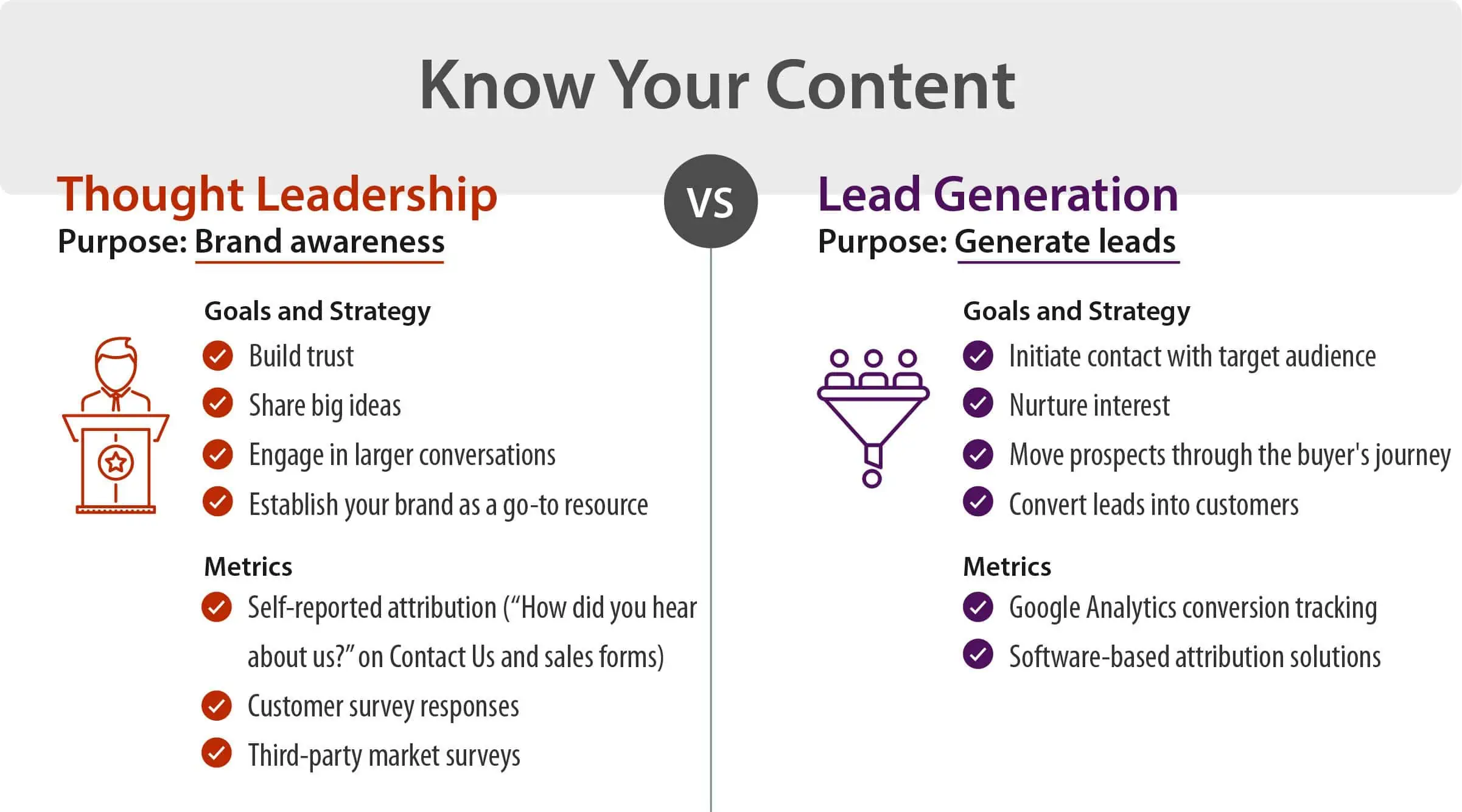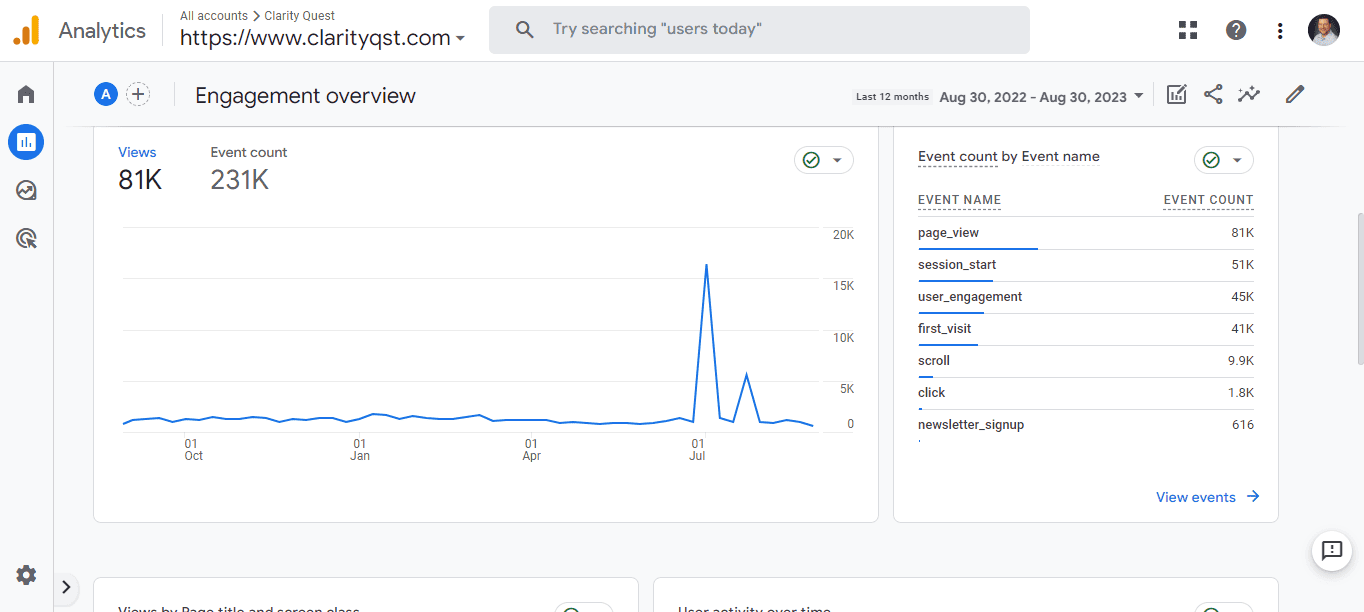To ensure your B2B health tech or life science marketing efforts are on track and yielding the desired results, creating a comprehensive marketing KPI dashboard – with or without the help of the right health IT marketing agency – is crucial.
A thoughtfully constructed marketing KPI dashboard provides real-time insights and empowers your team to make data-driven decisions.
Here’s where we recommend you focus your KPI tracking efforts.
1. Website traffic and engagement metrics
How are visitors finding and engaging with my website?
Your website is often the first point of contact for potential customers, investors, and partners. Tracking website traffic and engagement metrics within your marketing KPI dashboard gives you an understanding of your digital presence’s effectiveness.
Important KPIs to consider include:
- Source traffic: Measuring source traffic is crucial because it helps businesses understand where their online visitors are originating from, enabling them to tailor their marketing strategies and allocate resources effectively for maximum impact.
- Engagement rate: This is the percentage of engaged sessions on your website or mobile app. For reference, the bounce rate – introduced in the move from Universal Analytics to GA4 – is the opposite of the engagement rate.
- Average session duration: This metric reveals how long visitors spend on your website, indicating their level of interest in your content.
- Conversion rate: Track the percentage of visitors who take a desired action, such as signing up for a newsletter or requesting a demo.
2. Lead generation and conversion metrics
How many SQLs are we generating and how are they converting into customers?
In the health tech and life sciences industries, generating quality leads is pivotal for growth.
Monitor the following KPIs to measure your lead generation efforts:
- Lead generation rate: This KPI calculates the percentage of website visitors who become leads by filling out a contact form or downloading gated content.
- Lead-to-customer conversion rate: Measure the percentage of leads that eventually convert into paying customers. This KPI helps assess the quality of your leads and the efficiency of your sales funnel.
- Funnel stage conversion rates: Break down the conversion rates for each stage of your sales and marketing funnel, from initial contact, to MQL, to SQL, to final conversion. Identify where potential bottlenecks exist and optimize accordingly.
3. Social media metrics
How are users responding to our content and messaging?
Social media platforms play a pivotal role in brand awareness and engagement. Monitoring these metrics helps you understand how effectively you’re connecting with your audience:
- Follower growth: Keep track of how your social media following is growing over time.
- Engagement rate: Calculate the percentage of your followers who interact with your posts through likes, comments, shares, and clicks.
- Social media reach and impressions: Measure the number of people who see your posts (reach) and how many times your posts are displayed (impressions).
4. Paid social metrics
How are targeted prospects responding to our content and messaging?
Social media ad metrics provide valuable insights into the effectiveness of marketing campaigns, enabling you to optimize strategies, target audiences more precisely, and achieve better returns on your advertising investments.
- Click-through rate: Measure how many people who view a social media ad click through to read more, buy, or take some other action.
- Engagement rate: Calculate the percentage of your followers who interact with your ad through likes, comments, shares, and clicks.
- Conversion rate/lead generation form completion rate: Divide the number of conversions by the number of visitors. Measure how well your social media efforts are working to achieve specific business goals.
5. Content performance metrics
Which of our content is stickiest?
Creating valuable and relevant content establishes your authority and attracts your target audience. Monitor the performance of your content with these KPIs:
- Pageviews and unique pageviews: Analyze which pieces of content are attracting the most attention and resonating with your audience.
- Time on page: Measure how long visitors spend reading your content. Higher time on page indicates engagement with the material.
- Top-performing content: Identify your best-performing blog posts, whitepapers, videos, or infographics, and analyze what makes them successful.
6. Email marketing metrics
Which emails resonate with prospects and how?
Email marketing remains a powerful tool for nurturing leads and maintaining relationships.
Keep an eye on these KPIs to assess the effectiveness of your email campaigns:
- Open rate: Measure the percentage of recipients who open your emails. A compelling subject line can positively impact this metric.
- Click-to-open rate (CTOR): Calculate the percentage of openers who click links within your emails. This indicates the level of engagement with your content.
- Conversion rate: Track the percentage of recipients who take the desired action after clicking through an email, such as downloading a resource or requesting a demo.
7. Customer retention and satisfaction metrics
Which customers are staying/leaving and how much are they worth?
In the health tech and life sciences industries, customer satisfaction and retention are paramount. Include these KPIs to monitor your ongoing customer relationships:
- Customer churn rate: Calculate the percentage of customers who have stopped using your product or service over a specific time period.
- Net promoter score (NPS): This metric measures customer loyalty and satisfaction by asking customers how likely they are to recommend your product or service to others.
- Customer lifetime value (CLTV): Determine the average revenue generated from a customer over their entire relationship with your company.
Making major marketing decisions without data is a mistake
Creating a dashboard that incorporates these essential marketing KPIs allows digital health and life science companies to assess their marketing efforts comprehensively. The insights gained from these metrics not only inform strategic decisions but also provide a foundation for continuous improvement.
There are several free tools you can use. We use Google Looker Studio (fka Google Data Studio).
By focusing on these key areas, you can fine-tune your marketing strategies, optimize your campaigns, and ultimately drive growth in the competitive landscape of digital health and life sciences. Remember, a data-driven approach is essential for staying ahead in this dynamic landscape.





